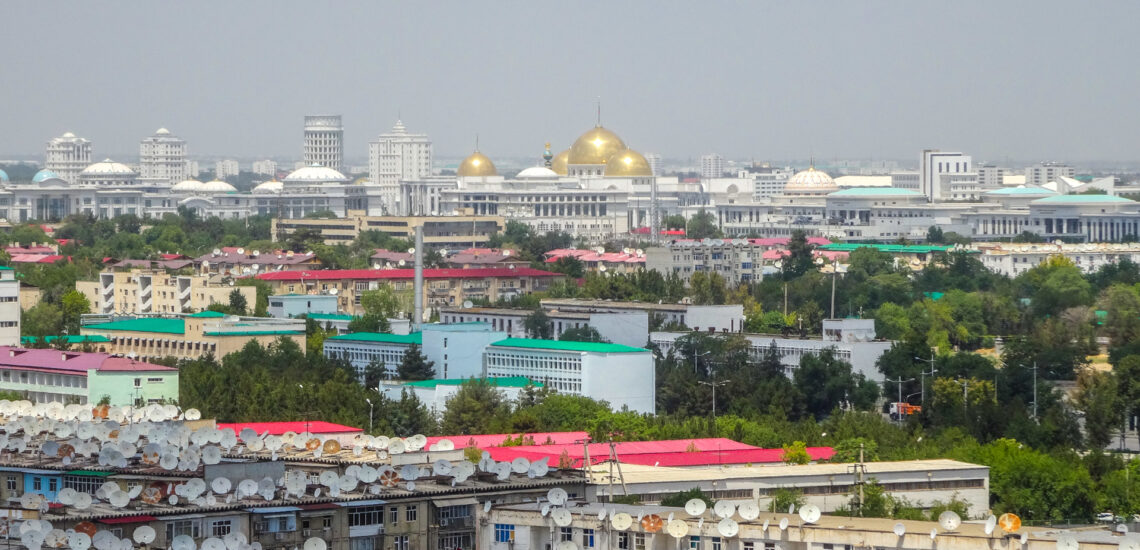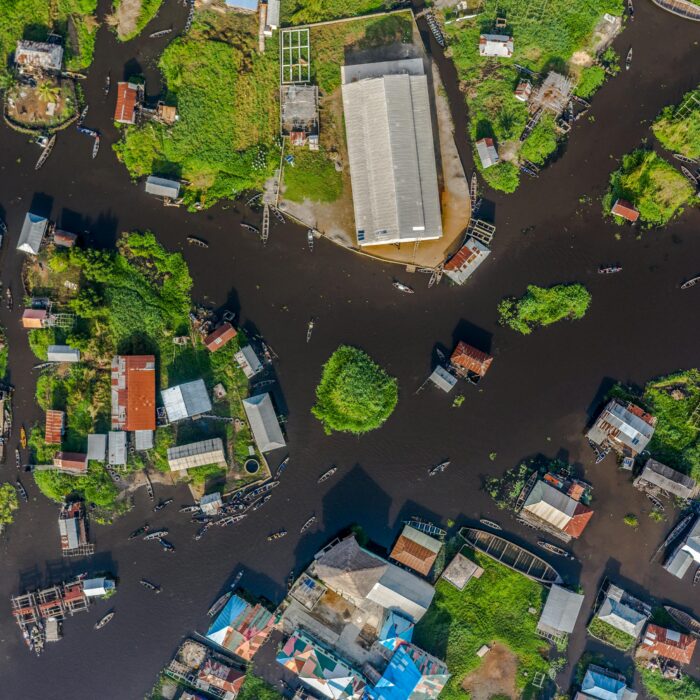Quick facts about Turkmenistan:
- Population: Approximately 6 million people.
- Capital: Ashgabat.
- Area: Around 488,100 square kilometers.
- Currency: Turkmenistan Manat (TMT).
- Official Language: Turkmen.
- Geography: Located in Central Asia, Turkmenistan is characterized by vast deserts, including the Karakum Desert, and borders the Caspian Sea to the west.
Fact 1: More than 70% of Turkmenistan is desert
Turkmenistan is predominantly covered by desert landscapes, with the Karakum Desert encompassing a significant portion of the country. The Karakum, meaning “Black Sand” in Turkic, is one of the largest sand deserts globally and contributes to the arid and dry conditions in Turkmenistan. The desert terrain influences the country’s climate and environment, shaping its unique geography. Despite the arid nature of much of its land, Turkmenistan has taken steps to harness its natural resources, including significant natural gas reserves.
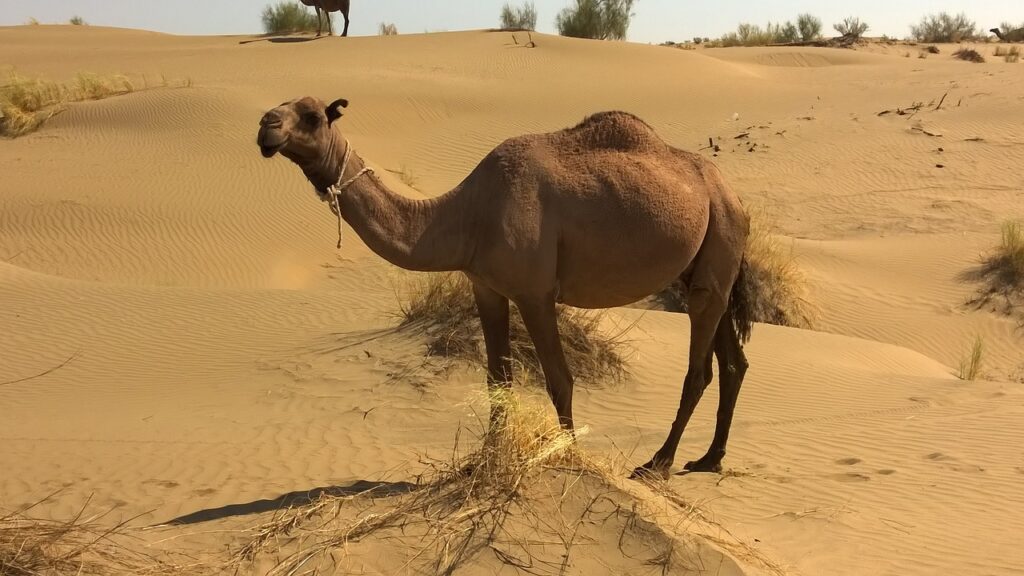
Fact 2: The country has a strict dictatorship, so there are many unusual laws in Turkmenistan
Turkmenistan is known for its authoritarian political system, characterized by a strong central government and limited political freedoms. Under the leadership of the late President Saparmurat Niyazov and later President Gurbanguly Berdimuhamedow, the country has faced criticism for restrictions on political dissent and freedom of expression. With the new president being the son of the previous one, things continue and don’t change for the better.
Under President Niyazov, a pervasive personality cult was established, with images and statues glorifying the president prominently displayed across the country. Turkmenistan has been criticized for limited media freedom, with strict controls on independent journalism and limited access to information. The government has historically placed restrictions on citizens’ ability to travel abroad, with complex procedures for obtaining passports and exit visas.
Fact 3: It is one of the least visited countries in the world
Turkmenistan is often considered one of the least visited countries in the world in terms of international tourism. The country has historically faced challenges in terms of obtaining tourist visas, limited infrastructure for tourism, and a generally closed political environment.
Some factors contributing to Turkmenistan’s status as one of the least visited countries include:
- Visa Restrictions: Obtaining a tourist visa for Turkmenistan has been a complex process, and the country has not had a visa-free regime for many nationalities.
- Limited Tourism Infrastructure: Turkmenistan has had limited tourism infrastructure, including accommodations and transportation options, making it less accessible for international tourists.
- Political Environment: The country’s closed political environment and restrictions on independent travel have also contributed to lower tourist numbers.
Note: There are also filming bans in the country. In case the President’s motorcade drives through the streets and everyone leaves the streets. In case you plan to visit the country, check whether you need an International Driving License in Turkmenistan to drive.
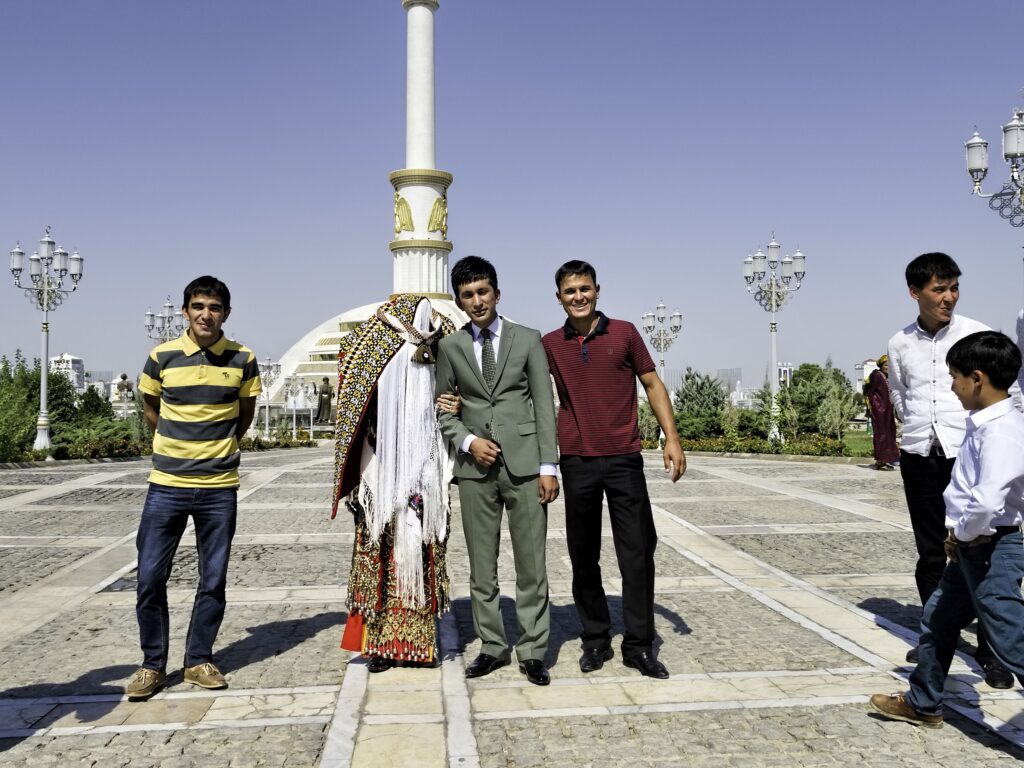
Fact 4: The national dish in Turkmenistan is plov
Plov, also known as pilaf or pulao, is a popular and traditional dish in Turkmenistan. It is a rice-based dish cooked with a variety of ingredients such as meat (usually lamb or beef), vegetables, and aromatic spices. Plov holds cultural significance and is often served during special occasions, celebrations, and festive gatherings in Turkmenistan.
The preparation of plov can vary, and different regions may have their own variations of the dish. The combination of rice, meat, and seasonings creates a flavorful and hearty meal that reflects the culinary heritage of Turkmenistan. Plov is not only a staple dish in Turkmen cuisine but also holds cultural importance as a symbol of hospitality and communal sharing of food.
Fact 5: The silk road passed through Turkmenistan
Turkmenistan, located in Central Asia, was an integral part of the historic Silk Road, the ancient network of trade routes that connected the East and West. The Silk Road facilitated the exchange of goods, ideas, and cultures between different regions and civilizations. Several ancient trading cities in Turkmenistan played a crucial role in this network, serving as important hubs for commerce, culture, and knowledge exchange.
One notable example is Merv, also known as Mary, which was a major Silk Road city and is now a UNESCO World Heritage Site. Merv was a key center for trade, science, and culture during various periods of history. Other cities along the Silk Road in Turkmenistan include Nisa and Kunya-Urgench, both recognized for their historical significance and architectural remnants from ancient times.
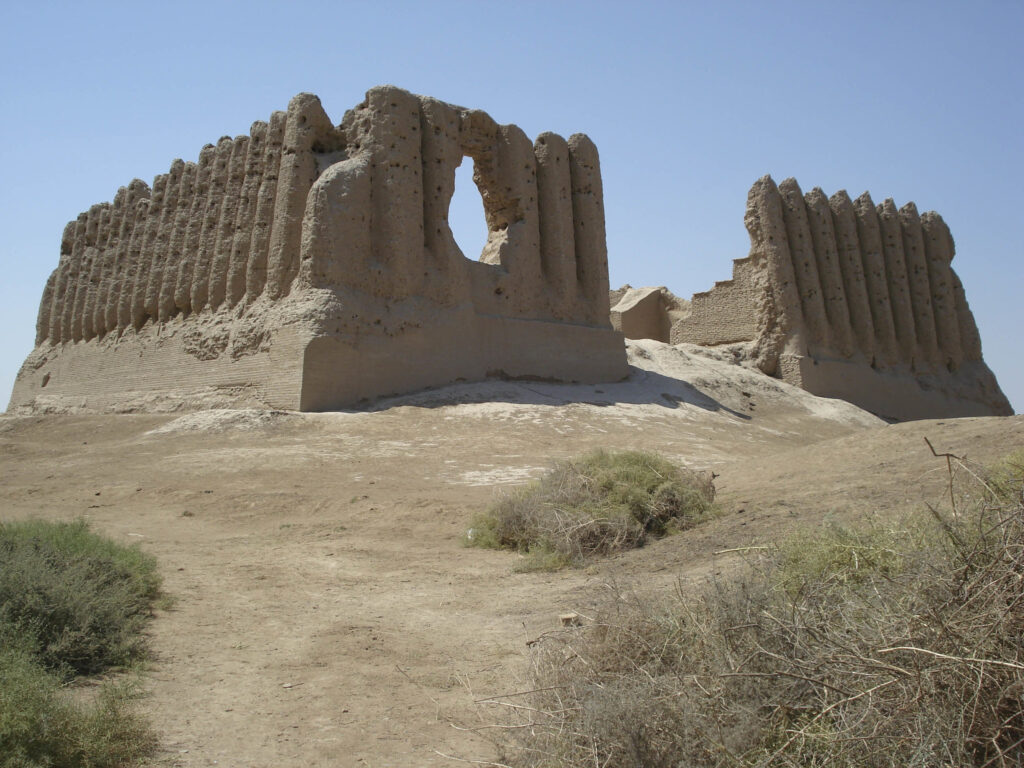
Fact 6: The architecture of Ashgabat is special
The cityscape is characterized by modern and grandiose structures, often featuring white marble, gold accents, and a mix of traditional Turkmen design elements. Several factors contribute to the unique architectural style of Ashgabat:
- White Marble Buildings: Ashgabat is known as the “City of White Marble” due to the prevalent use of white marble in its architecture. Many government buildings, monuments, and public spaces are adorned with this bright and reflective material.
- Monumental Structures: The city is home to numerous grand monuments and buildings, including the Neutrality Arch, Independence Monument, and the Wedding Palace. These structures showcase a blend of modern design and Turkmen cultural motifs.
- Golden Domes and Statues: Gold-colored elements, including domes and statues, are often incorporated into the architectural designs, contributing to the opulent appearance of the city.
- Urban Planning: Ashgabat underwent significant urban redevelopment, especially in the post-Soviet era, resulting in spacious boulevards, parks, and meticulously planned city layouts.
- Influence of the Ruhnama: The Ruhnama, a spiritual and ideological guidebook written by former President Saparmurat Niyazov, has influenced the city’s architecture, with references to Turkmen history and culture.
Fact 7: Turkmenistan has a Gateway to Hell
This unique and otherworldly site is a natural gas field that has been burning continuously for several decades.
The Darvaza Gas Crater came into existence in 1971 when a Soviet drilling rig accidentally tapped into a cavern filled with natural gas. To prevent the release of potentially harmful methane gas, the decision was made to ignite the gas, expecting it to burn off within a few weeks. However, the crater has been burning ever since, becoming a mesmerizing and surreal spectacle in the Karakum Desert.
The fiery crater, with its perpetual flames and the backdrop of the desert night sky, has become a popular attraction for tourists seeking an extraordinary experience. While the Darvaza Gas Crater was initially the result of an industrial accident, it has evolved into an unintentional and captivating natural wonder in Turkmenistan.
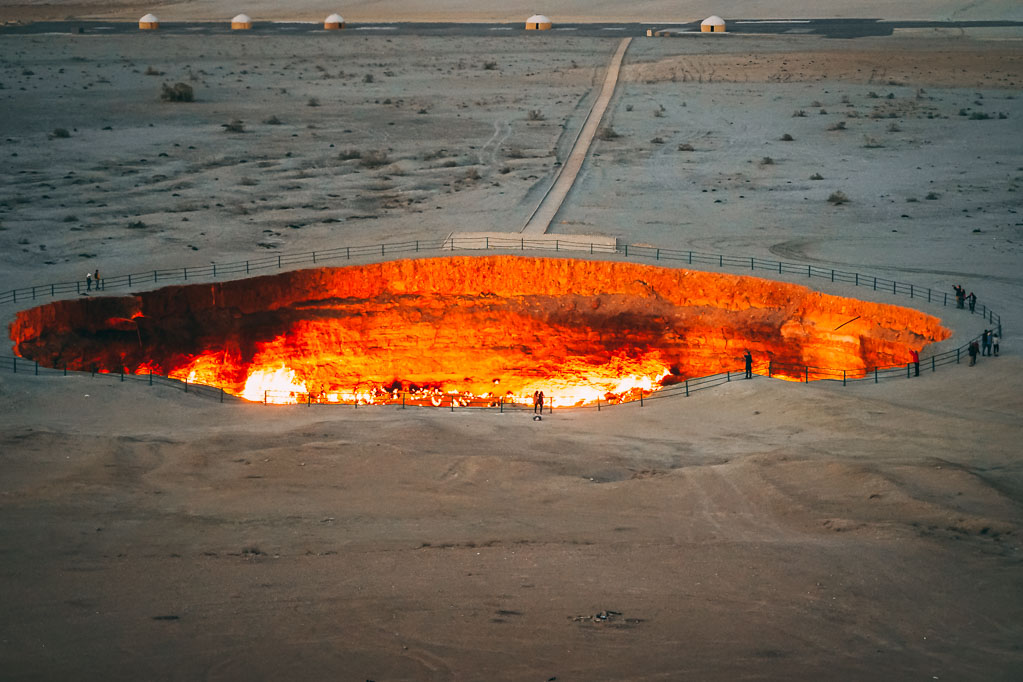
Fact 8: Horses are very important to Turkmenistan
The Akhal-Teke horse, in particular, is a breed that has deep roots in Turkmenistan and is considered one of the oldest and most distinct horse breeds in the world.
Key points about the importance of horses in Turkmenistan:
- Akhal-Teke Breed: The Akhal-Teke horse, known for its distinctive metallic sheen and endurance, is native to Turkmenistan. These horses have been traditionally bred by the Turkmen people for various purposes, including racing, riding, and as symbols of prestige.
- Symbol of National Identity: The Akhal-Teke horse is a symbol of national identity and pride for the Turkmen people. Its image has been incorporated into the national emblem, and statues and monuments dedicated to this breed can be found in the country.
- Cultural Significance: Horses play a central role in Turkmen cultural traditions, including ceremonies, festivals, and equestrian sports. The Akhal-Teke’s agility and speed make it well-suited for various equestrian activities.
- Nissa Horse Festival: Turkmenistan hosts events such as the Nissa Horse Festival, celebrating the cultural heritage associated with horses. The festival often includes equestrian competitions, traditional games, and performances.
- Nomadic Heritage: The historical nomadic lifestyle of the Turkmen people was closely tied to horses, which were essential for transportation, trade, and warfare. Even in the modern context, horses continue to be valued for their role in transportation and cultural practices.
Fact 9: The saltiest place of the Caspian Sea in Turkmenistan
The saltiest area of the Caspian Sea is found in Turkmenistan, particularly in the eastern part of the sea near the city of Garabogazköl. This region is known for having extremely high salinity levels, leading to the formation of vast salt flats and salt pans. The Garabogazköl area experiences high evaporation rates, and the concentration of salt in the remaining water contributes to the formation of salt deposits.

Fact 10: Turks and Turkmens are descended from the same tribe
Turks and Turkmens share a common Turkic ancestry but have developed unique cultural identities over time. Both groups originated from Central Asia and migrated westward, forming various Turkic tribes. The term “Turk” refers to a broader group scattered across Central Asia, the Middle East, and beyond, with distinct cultural trajectories in countries like Turkey, Azerbaijan, Turkmenistan, Uzbekistan, and Kazakhstan. “Turkmens” specifically denotes a Turkic ethnic group associated with Turkmenistan and smaller populations in neighboring countries. Despite a shared Turkic heritage, Turks and Turkmens have distinct languages, customs, and histories, reflecting the complexities of migration and cultural evolution over centuries.

Published March 10, 2024 • 8m to read

